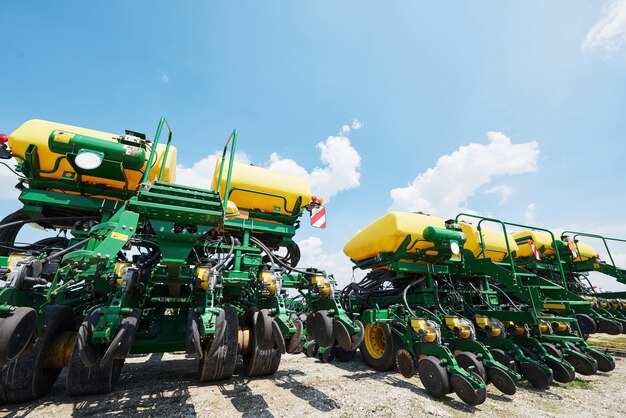
Sponsored article
In the ever-evolving world of agriculture, maximizing crop yield has become more essential than ever. Innovative seeding technology is at the forefront of this transformation, providing farmers with new tools and methods to enhance efficiency and sustainability. By leveraging these cutting-edge advancements, agricultural professionals can achieve higher productivity, optimize resource use, and contribute to sustainable farming practices. This article explores the various ways in which innovative seeding solutions are revolutionizing modern agriculture.
Innovative seeding technologies are transforming the agricultural landscape by enhancing the efficiency and effectiveness of crop production. The integration of cutting-edge solutions into traditional farming practices enables farmers to increase yields while minimizing input costs. Recent advancements in plant seeding advancements have focused on precision technology and automation, allowing for precise seed placement and improved germination rates. New systems use GPS guidance and real-time data analytics to adapt to varying soil conditions and optimize seed depth, spacing, and rate, ensuring that each seed has the best possible start.
One of the most remarkable innovations in this domain is the advanced air hoe drill, which exemplifies the strides made in agricultural technology. Designed with precision in mind, the advanced air hoe drill offers precise depth control and allows for customization with a range of openers to meet specific seeding needs. These innovations are pivotal in maximizing crop yield and sustainability, providing farmers with the tools needed to address modern agricultural challenges effectively.
Precision seeding stands at the forefront of agricultural innovation, offering a myriad of benefits that significantly enhance crop management and productivity improvement. By employing GPS technology and advanced equipment, precision seeding ensures that seeds are planted at the optimal depth and spacing, catering exactly to the crop’s requirements. This targeted approach eliminates the guesswork and dramatically reduces seed wastage, which is a common issue with traditional methods. Farmers who have embraced precision seeding witness tangible improvements; for example, a study in Iowa demonstrated that farmers using this technology saw up to a 15% increase in yield, showcasing the potent impact on productivity improvement. Furthermore, precision seeding allows for efficient resource allocation, ensuring that every seed has the best possible start, which leads to healthier crop growth and higher returns.
As precision seeding continues to evolve, its contribution to sustainable agriculture grows, promoting better decision-making in crop management. Not only does it optimize the seeding process, but it also allows farmers to adjust planting schemes in real-time based on weather conditions and soil variability. In practice, this responsiveness enhances the ability to mitigate environmental constraints and adapt to challenges promptly. Moreover, by reducing inputs like seeds and fertilizers, precision seeding directly leads to cost savings and a lower environmental footprint. With precision seeding, farmers are empowered to maximize their land’s potential, consistently achieving greater yields and driving productivity improvement across the board.
Sustainability in farming is becoming increasingly critical in today’s agriculture, with smart seeding technologies leading the charge toward more eco-friendly agriculture. By precisely placing seeds into the soil at the optimal depth and spacing, smart seeding reduces resource wastage and enhances growing conditions. This precision farming approach not only boosts crop yield but also minimizes the use of excess water, fertilizers, and pesticides, which are key contributors to environmental degradation. The smart seeding technique ensures that every seed gets the right start, promoting healthy plants while conserving essential natural resources.
Furthermore, smart seeding technologies enable farmers to monitor and adjust their practices in real time, ensuring that their farming methods align with sustainability goals. This adaptability supports biodiversity and improves soil health, crucial elements in eco-friendly agriculture. By decreasing chemical run-off and lowering carbon emissions through optimized field traffic, smart seeding fosters a more sustainable farming ecosystem, securing both our planet’s health and the future of agricultural productivity.